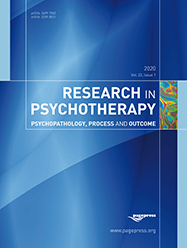Age differences in the relationship between threatening and coping mechanisms and preventive behaviors in the time of COVID-19 in the United States: Protection Motivation Theory

All claims expressed in this article are solely those of the authors and do not necessarily represent those of their affiliated organizations, or those of the publisher, the editors and the reviewers. Any product that may be evaluated in this article or claim that may be made by its manufacturer is not guaranteed or endorsed by the publisher.
Authors
It is important to understand the factors motivating people to adopt recommended behavioral changes in response to the coronavirus disease 2019 (COVID-19) pandemic, and how they differ for younger and older adults. Using a nationally representative sample from the Understanding America Study (3/10-3/31/2020), we assessed how four cognitive mediators affected uptake of protective activities for younger (aged 18-34) and older adults (aged 65+) during the beginning of the COVID-19 pandemic. Confirmatory factor analysis based on Protective Motivation Theory demonstrated associations between our observed variables and the latent constructs: perceived severity and susceptibility, and response efficacy and self-efficacy. Among younger adults, coping appraisal such as perceptions of effectiveness of behaviors in protecting them from coronavirus and belief in their ability to perform recommended changes led them to adopt preventive behaviors; for older people, threat appraisal such as perception of severity was associated with behavioral responses. Younger people may rely more on their assessment of coping resources and effectiveness in their response to COVID-19; while older people base their behavioral responses on their perception of the severity of the situation, which they appraise using information from media and the severity of the epidemic in their state of residence. Different strategies are required to motivate older and younger people to adopt behavioral modifications, which are critical in reducing further spread of COVID-19.
How to Cite

This work is licensed under a Creative Commons Attribution-NonCommercial 4.0 International License.






